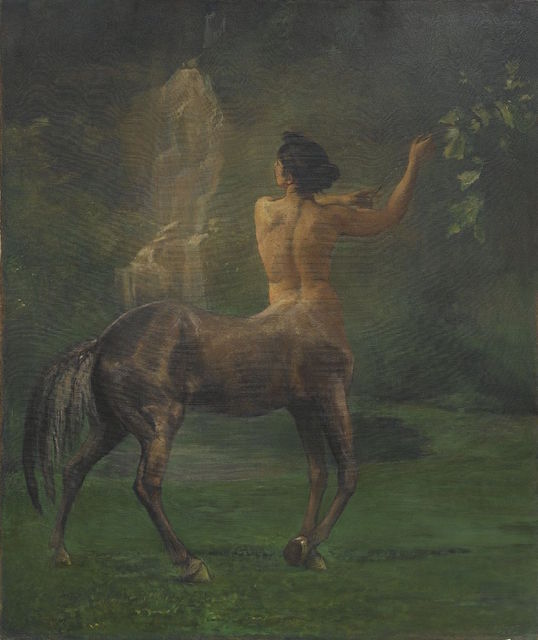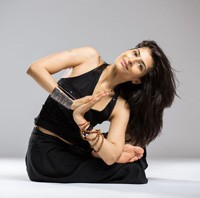“Only the Wounded Healer heals.” ~ Carl Jung
The Wounded Healer archetype was developed by Carl Jung, who drew upon the myth of Chiron to explain how the one who is wounded becomes capable of healing and helping others when he realizes that the wound he carries is universal.
The Greek myth of Chiron the centaur, who was half man, half horse and the progeny of Zeus was wounded by an arrow of Heracle’s bow. Since he was a God, and therefore immortal he did not die of the arrow but was nonetheless condemned to journey through the rest of his days in excruciating pain due to the severe wounded-ness.
Because he had no choice but to suffer the ache that now became part of his identity, he resigned to living with the pain. This resignation, a tacit acceptance brought with it a sense of patience with the difficulty which resulted in his great ability to understand, connect and empathize with the pain of others.
The experience of accepting the wounded-ness and the subsequent pain from it, became a doorway to intimacy with other people’s pain.
It led to a deep compassion that came from a place of experience and not just sympathy. Carl Jung said:
“If there is one single idea I could pass on to you, it would be that we’re all wounded to one degree or another, and these wounds affect each of us differently—body, mind, heart, spirit—yet no more or no less significantly do they impact our lives and our health. One’s suffering is one’s growth and opportunity for healing and awakening. Awareness of the presence and inevitability of suffering awakens us to the possibility of freedom. The realization and acceptance of our own personal suffering is the path to such liberation; this is the liberating experience of facing painful truth. Accepting painful truth is the first step on the path to healing.”
Being wounded is a universal event. Everyone is a little broken or damaged in this experience of life. Some conceal it better than others. Jungians believe that the wound is a numinous event. It may come to each one of us in its unique garb triggered by events in our individual sets of experiences. However, the pain of being wounded is a universal feeling.
Jung explained how through healing the wounds of others, he himself in some ways heals his own wounded-ness as well. The Wounded Healer therefore, Jung believes is in a far better position to heal another person because of his own experience and awareness of his wound than one who is not in touch with his wounded-ness.
By being in touch with his own pain and recognizing the extent of a personal, spiritual, mental even physical discomfort he is able to be more of an authentic companion to others on their road to healing.
In a world where we hide our vulnerabilities and craft lives that conceal our own brokenness—even from ourselves, let alone others—in attending to one’s wounded-ness it is as if one accepts an invitation toward a deeper path to connecting with those around us who may need our help.
This honest intimacy with oneself is what allows one to be authentic with another.
Accepting and acknowledging the brokenness is in a way, a certain death of the old self. The self that covered up its vulnerability even from its own conscious awareness. The one who presented a picture perfect facade to the world, while the poison from the wound continued to spread inside.
If instead, the wound is acknowledged, embraced, and understood, it becomes a unique gift that makes the new self sensitive to the universe it finds itself in. That sensitivity allows for deeper connection and truer relationships as a result.
When the wound is not addressed and continually suppressed, people keep recreating patterns in life that force them to revisit the pain. Hence many people find themselves in the same unpleasant experiences and situations, with only the people in them changing. The issue at the core remains the same.
Once wounded, the very existence of the wound itself creates the need to pay attention to it. No matter how far and wide we travel away from the reality of the hurt that’s quietly throbbing in the center of our lives, we find that sooner or later the distractions don’t support the habit of avoiding the pain. On the contrary, the pain of avoiding becomes multi-layered in and of itself.
The thing we fear the most is the very thing that leads us into a richer experience of life. Rumi, the 13th century mystic said:
“Your defects are the way that glory gets manifested. Whoever sees clearly what’s diseased in himself begins to gallop on the way—self complacency blocks the workmanship—don’t turn your head—keep looking at the bandaged place. That’s where the light enters you.”
The path toward the initiation of becoming a wounded healer requires that we understand that once we set foot on this path, there is no turning back. Inevitably, we will encounter unpleasantness because we have to revisit all the events that brought the pain in the first place. Most of the time this means looking at parts of our own personality that are referred to as the shadow side. Elements of our ego.
Jung (1963) wrote:
“The shadow, is ‘that hidden, repressed, for the most part inferior and guilt-laden personality whose ultimate ramifications reach back into the realm of our animal ancestors and so comprise the whole historical aspect of the unconscious.'” (cited in Diamond, p. 96).
At first, the wounds within are hard to see and painful to acknowledge; moreover going through the wound is, accepting the death of the self—as we once knew it. That by far, offers a whole new set of challenges. With time we develop deep identification with the wound and all the distractions and facades we have created in our lives to hide from that vulnerability.
At the same time, our wound is perhaps the only way we would care to look at ourselves closely. Otherwise, it’s easier to just keep stomping through life and not allow the psyche to be hampered by thoughts that delay us reaching our goals and destinations.
“You are not what happened to you; you are what you choose to become.” ~ Carl Jung
The wound, and the hurt it subsequently brings are the only true invitations to pause, reflect and take stock. The wounding is where the path to our authentic self leads. Hence Jungians believe that wounding is a natural outcome of going through the human experience of being in this world.
Especially for people in the profession of healing, it is important that they have visited their own internal dark abyss in order to return and connect with those they have to heal with a more compassionate, empathic understanding.
That said, everyone is wounded, but not everyone chooses to become a healer. Nevertheless to undertake this journey within the self does shift the way we see ourselves and allows us to become more empathetic toward our own life path.
This kind of awareness is not about looking at oneself from the lens of being a victim in life, but rather understanding that the wound is the way we are broken open to tenderness and to loving in a fuller more deeper sense. This honesty with oneself has a ripple effect of tenderness in our homes, our societies and our world.
~
~
Relephant Links:
The Deeper Meaning of Dreams, According to Carl Jung.
Author: Tania Kazi
Apprentice Editor: Sarrah Chaouki; Editor: Travis May
Image: Wikipedia












Read 0 comments and reply